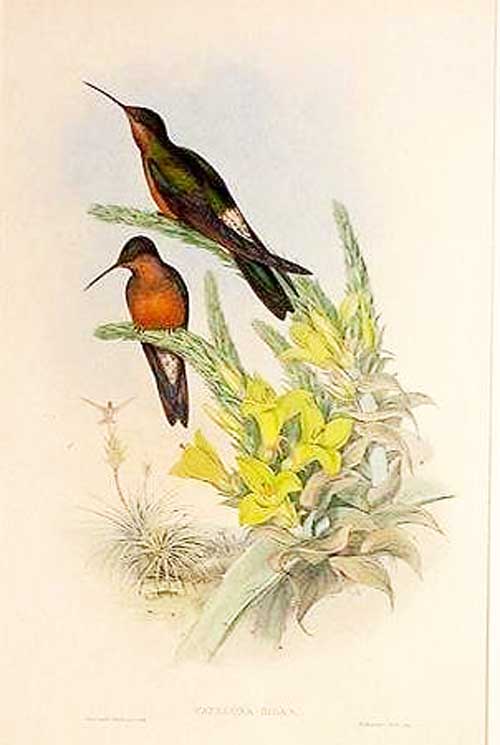Patagona gigas Cladus: Eukaryota Name Patagona gigas (Vieillot, 1824) Vernacular names The Giant Hummingbird (Patagona gigas) is the largest member of the hummingbird family, weighing 18-24 g (6/10 - 8/10 of an ounce) and measuring approximately 21.5 cm (8½ in) in length.[2] This is approximately the length same length as a European Starling or a Northern Cardinal, though the Giant Hummingbird is considerably lighter due to its more slender build and fairly long bill. It is the only member of the genus Patagona.[3] In Bolivia, the Giant Hummingbird is known in Quechua as "burro q'enti". The Spanish word "burro" refers to its dull, relatively unattractive plumage compared to other locally occurring hummingbirds (e.g. Red-tailed Comet).[3]
The Giant Hummingbird is found in rather arid open woodland and scrub between 2,000 and 4,300 meters (6,500-14,100 feet) above sea level in the Andes of South America, from far south-western Colombia to central Chile and Argentina.[3] Global range and population The range of P. gigas is rather large, and its global Extent of Occurrence is estimated at 1,200,000 km2. Its global population is believed to be not less than 10,000 adults.[1] References 1. ^ a b Assessors: BirdLife International / Evaluators: Bird, J.; Butchart, S. (BirdLife International Red List Authority) (2008). "Patagona gigas in IUCN 2009". IUCN Red List of Threatened Species. Vers. 2009.1. International Union for Conservation of Nature and Natural Resources. http://www.iucnredlist.org/apps/redlist/details/143018/0/full. Retrieved October 26, 2009. (Database entry includes justification for why this species is of least concern.) Source: Wikispecies: All text is available under the terms of the GNU Free Documentation License |
|

